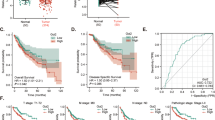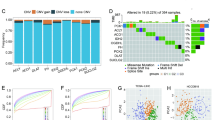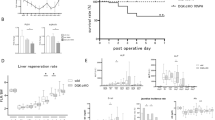Abstract
To identify putative tumor suppressor genes in hepatocarcinogenesis, we combined the representational difference analysis and reverse northern blot identifying downregulated genes in human hepatoma tissues. One of them was Dkk-3/REIC. Dkk-3/REIC was downregulated in 11 out of the 20 human hepatoma tissues as compared to their counterparts of noncancerous liver tissues by northern blot analysis. It was also downregulated in 29 out of 48 human cancer samples including the kidney, urinary bladder, prostate, pancreas and lung cancers. Its gene product, Dkk-3/REIC, was found to be N-glycosylated and have two isoforms, the 55 kDa in the cytosol and 50 kDa secreted in the medium. Ectopic expression of Dkk-3/REIC in HeLa, Hep3B and Huh 7 cells led to suppression of cell growth, which was primarily attributable to induction of cell apoptosis. The suppression phenomenon was found to be cell-type related (most prominent in HeLa and least in Hep3B cells) and cell-density dependent (attenuated as the cell density increased). Transduction of Dkk-3/REIC into HeLa and Hep3B cells caused suppression on colony formation in vitro and reduced tumor growth rate in inoculated athymic nude mice. In conclusion, these data indicate that Dkk-3/REIC functions as a suppressor for human tumor growth.
This is a preview of subscription content, access via your institution
Access options
Subscribe to this journal
Receive 50 print issues and online access
$259.00 per year
only $5.18 per issue
Buy this article
- Purchase on SpringerLink
- Instant access to full article PDF
Prices may be subject to local taxes which are calculated during checkout





Similar content being viewed by others
References
Bafico A, Liu G, Yaniv A, Gazit A and Aaronson SA . (2001). Nat. Cell Biol., 3, 683–686.
Bhanot P, Brink M, Samos CH, Hsieh JC, Wang Y, Macke JP, Andrew D, Nathans J and Nusse R . (1996). Nature, 382, 225–230.
Brott BK and Sokol SY . (2002). Mol. Cell. Biol., 22, 6100–6110.
Cardigan KM and Nusse R . (1997). Genes Dev., 11, 3286–3305.
de La Coste A, Romagnolo B, Billuart P, Renard CA, Buendia MA, Soubrane O, Fabre M, Chelly J, Beldjord C, Kahn A and Perret C . (1998). Proc. Natl. Acad. Sci., USA, 95, 8847–8851.
Fedi P, Bafico A, Nieto Soria A, Burgess WH, Miki T, Bottaro DP, Kraus MH and Aaronson SA . (1999). J. Bio. Chem., 274, 19465–19472.
Gao S, Worm J, Guldberg P, Eiberg H, Krogdahl A, Liu CJ, Reibel J and Dabelsteen E . (2004). Int. J. Cancer, 109, 230–237.
Grotewold L and Ruther U . (2002). EMBO J., 21, 966–975.
He TC, Sparks AB, Rago C, Hermeking H, Zawel L, da Costa LT, Morin PJ, Vogelstein B and Kinzler KW . (1998). Science, 281, 1509–1512.
Hsieh SY, Liaw SF, Lee SN, Hsieh PS, Lin KH, Chu CM and Liaw YF . (2003). Br. J. Cancer, 88, 210–216.
Kobayashi K, Ouchida M, Tsuji T, Hanafusa H, Miyazaki M, Namba M, Shimizu N and Shimizu K . (2002). Gene, 282, 151–158.
Krupnik VE, Sharp JD, Jiang C, Robison K, Chickering TW, Amaravadi L, Brown DE, Guyot D, Mays G, Leiby K, Chang B, Duong T, Goodearl AD, Gearing DP, Sokol SY and McCarthy SA . (1999). Gene, 238, 301–313.
Kurose K, Sakaguchi M, Nasu Y, Ebara S, Kaku H, Kariyama R, Arao Y, Miyazaki M, Tsushima T, Namba M, Kumon H and Hug NH . (2004). J. Urol., 171, 1314–1318.
Lin CH, Hsieh SY, Sheen IS, Lee WC, Chen TC, Shyu WC and Liaw YF . (2001). Cancer Res., 61, 4238–4243.
Lisitsyn N, Lisitsyn N and Wigler M . (1993). Science, 259, 946–951.
Mao B and Niehrs C . (2003). Gene, 302, 179–183.
Mao B, Wu W, Davidson G, Marhold J, Li M, Mechler BM, Delius H, Hoppe D, Stannek P, Walter C, Glinka A and Niehrs C . (2002). Nature, 417, 664–667.
Micsenyi A, Tan X, Sneddon T, Luo JH, Michalopoulos GK and Monga SPS . (2004). Gastroenterology, 126, 1134–1146.
Mikheev AM, Mikheeva SA, Liu B, Cohen P and Zarbl H . (2004). Carcinogenesis, 25, 47–59.
Morin PJ, Sparks AB, Korinek V, Barker N, Clevers H, Vogelstein B and Kinzler KW . (1997). Science, 275, 1787–1790.
Nelson WJ and Nusse R . (2004). Science, 303, 1483–1487.
Nusse R and Varmus HE . (1982). Cell, 31, 99–109.
Nusse R and Varmus HE . (1992). Cell, 69, 1073–1087.
Rubinfeld B, Robbins P, El-Gamil M, Albert I, Porfiri E and Polakis P . (1997). Science, 275, 1790–1792.
Sasaki T, Suzuki H, Yagi K, Furuhashi M, Yao R, Susa S, Noda T, Arai Y, Miyazono K and Kato M . (2003). Cancer Res., 63, 801–806.
Satoh S, Daigo Y, Furukawa Y, Kato T, Miwa N, Nishiwaki T, Kawasoe T, Ishiguro H, Fujita M, Tokino T, Sasaki Y, Imaoka S, Murata M, Shimano T, Yamaoka Y and Nakamura Y . (2000). Nat. Genet., 24, 245–250.
Tsuji T, Miyazaki M, Sakaguchi M, Inoue Y and Namba M . (2000). Biochem. Biophys. Res. Commun., 268, 20–24.
Tsuji T, Nozaki I, Miyazaki M, Sakaguchi M, Pu H, Hamazaki Y, Iijima O and Namba M . (2001). Biochem. Biophys. Res. Commun., 289, 257–263.
Wheelock MJ and Johnson KR . (2003). Annu. Rev. Cell Dev. Biol., 19, 207–235.
Wirths O, Waha A, Weggen S, Schirmacher P, Kuhne T, Goodyer CG, Albrecht S, Von Schweinitz D and Pietsch T . (2003). Lab. Invest., 83, 429–434.
Acknowledgements
The authors are grateful to Miss Su-Chen Ji for her expertise in graph drawing, and to Miss Jing-Yu Yeh and Mr Hsio-Cheng Chang for their excellent technique assistance. This work was supported in part by a grant from Chang Gung Memorial Hospital and a grant from National Science Council, Taiwan.
Author information
Authors and Affiliations
Corresponding author
Rights and permissions
About this article
Cite this article
Hsieh, SY., Hsieh, PS., Chiu, CT. et al. Dickkopf-3/REIC functions as a suppressor gene of tumor growth. Oncogene 23, 9183–9189 (2004). https://doi.org/10.1038/sj.onc.1208138
Received:
Revised:
Accepted:
Published:
Issue date:
DOI: https://doi.org/10.1038/sj.onc.1208138
Keywords
This article is cited by
-
Bone secreted factors induce cellular quiescence in prostate cancer cells
Scientific Reports (2019)
-
A novel FOXO1-mediated dedifferentiation blocking role for DKK3 in adrenocortical carcinogenesis
BMC Cancer (2017)
-
Canine REIC/Dkk-3 interacts with SGTA and restores androgen receptor signalling in androgen-independent prostate cancer cell lines
BMC Veterinary Research (2017)
-
Adenovirus vector carrying REIC/DKK-3 gene: neoadjuvant intraprostatic injection for high-risk localized prostate cancer undergoing radical prostatectomy
Cancer Gene Therapy (2016)
-
Identification of a progenitor cell population destined to form fracture fibrocartilage callus in Dickkopf-related protein 3–green fluorescent protein reporter mice
Journal of Bone and Mineral Metabolism (2016)



